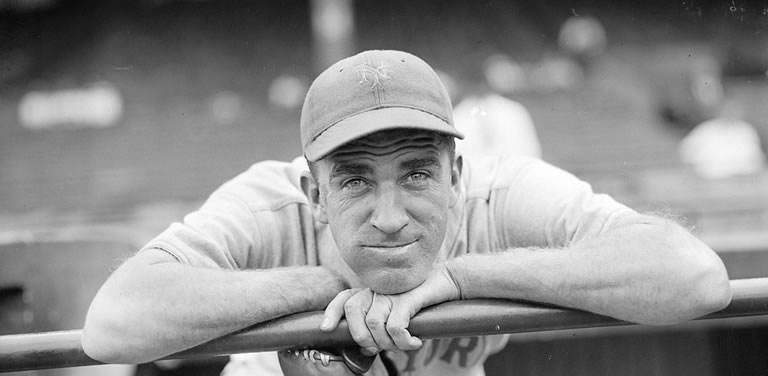Introducing our Value-Based Similarity Scores
Nov 9, 2012 by Adam Darowski
One of my favorite features of the Hall of Stats is the Similarity Scores. We love Bill James and Baseball-Reference, but the similarity scores used by each are flawed. They are based on raw numbers and are not adjusted for era, ballpark, and other contexts. Our Similarity Scores are based on run values. While two similar players on this site may not appear similar on the surface, they did provide similar value.
A .300 batting average with 8 home runs in the deadball era made you a star. A player with those same numbers in the steroid era actually may have been a below average player, depending on his position. WAR already sorts out these differences when calculating run values. So we use these run values to calculate our scores.
Here are the inputs into our formula:
- WAR Batting Runs
- WAR Baserunning Runs
- WAR Double Play Runs
- WAR Defensive Runs
- WAR Positional Runs
- WAR Pitching Runs
- adjWAR
- adjWAA
- Plate Appearances
- Innings Pitched
The closer a pair’s score gets to zero, the more similar the players are. Because most of the inputs are centered around league average, the better a player gets, the harder it is for him to have closely similar players.
Some Examples

Let’s look at a chain of players by starting all the way at the top. Babe Ruth was incredibly unique—not only because he was the best player of all time, but also because he was the most valuable hitter of all time and also a very valuable pitcher. The most similar player to Ruth is Barry Bonds. They have a similarity score of 896, which isn’t very similar at all.
Bonds, in turn, is most similar to Ty Cobb. Their score is 510—much closer than Ruth and Bonds, but still not very similar at all. The most similar player to Cobb is Henry Aaron, with a score of 400. We’re getting a bit closer.
Aaron’s most similar player is Stan Musial and they get a little closer (299). Musial’s most similar player is Tris Speaker, with a score of 262. Speaker’s most similar player is actually Musial, so our little chain has come to an end.
An Example of a Surprise

Occasionally, you will find a pair of Hall-worthy players who are very similar. Interestingly enough, the pair that jumped out at me are not similar in the traditional sense whatsoever.
Carl Hubbell was a star pitcher in the 1930s. He led his league in wins and ERA three times each, won two MVP awards, and famously struck out five consecutive Hall of Famers during the 1934 All Star Game.
Hubbell’s WAR (68.4) and WAA (38.1) are dazzling and lead to a Hall Rating of 135.
Hubbell happens to be incredibly similar—in terms of value—to one of the most underrated pitchers in the history of the game. Rick Reuschel was a chubby starter in the 1970s and 1980s. He rarely led his league in anything. The closest he ever earned to a major award was a couple third place finishes for the Cy Young Award. He did win the Hutch Award once. (The Hutch Award “is given annually to an active Major League Baseball player who best exemplifies the fighting spirit and competitive desire of Fred Hutchinson.”) Reuschel was an All Star three times.
Reuschel received two Hall of Fame votes in 1997. Hubbell, meanwhile, was named on 87% of ballots in 1947. Yet these two pitchers have an ultra-low similarity score of 54. What gives?
The two pitched roughly the same number of innings. Reuschel allowed about 100 runs more than Hubbell. That’s not much. When you start to adjust their runs allowed, the gap shrinks quickly. In fact, the gap shrinks immediately when you factor in the defenses they played in front of.
Reuschel’s defenses were rather poor. Over the course of his career, they cost him about 71 runs more than the average defense would. Hubbell, meanwhile, played in front of some excellent Giants teams. Those defenses actually saved him 92 runs more than the average defense. Those numbers are not reflected in ERA—or even ERA+.
Suddenly, Reuschel has the advantage, but that gap is again closed by era and park factors. In the end, the pitchers come out standing shoulder to shoulder.
In addition to Hubbell, Reuschel is also extremely similar to John Smoltz. Their score is 57. Smoltz is much closer to Reuschel than he is to Hubbell, however. The score between Smoltz and Hubbell is 80.
Reuschel and Hubbell… it doesn’t make sense—until you start asking why.
Thanks, Tim!
Special thanks to Tim Vaughan (@MechanicalTim) for giving us a crash course in how to calculate similarity scores.
Note: Similarity scores are currently available for all players with 1500+ plate appearances or 500+ innings pitched.
Note: The Hall Rating formula has changed slightly since this article was published. The Hall Rating figures used are from the time of publication.